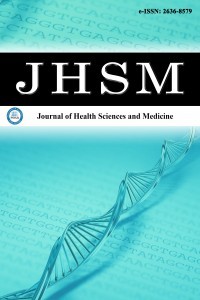1.
Ren C, Wang Z, Taymaz T, et al. Supershear triggering and cascading fault ruptures of the 2023 Kahramanmaraş, Türkiye, earthquake doublet. Science. 2024;383(6680):305-311.
2.
Brunckhorst CB, Holzmeister J, Scharf C, Binggeli C, Duru F. Stress, depression and cardiac arrhythmias. Ther Umsch. 2003; 60(11):673-681.
3.
Leor J, Poole K, Kloner RA. Sudden cardiac death triggered by an earthquake. NEJM. 1996;334(7):413-419.
4.
He Q, Wang F, Li G, et al. Crush syndrome andacute kidney injury in the Wenchuan Earthquake. J Trauma. 2011;70(5):1213-1218.
5.
Better OS, Abassi Z, Rubinstein I, Marom S, Winaver Y, Silberman M. The mechanism of muscle injury in the crush syndrome: ischemic versus pressurestretch myopathy. Miner Electrolyte Metab. 1990;16(4):181-184.
6.
Better OS. The crush syndrome revisited (1940-1990). Nephron. 1990;55(2):97-103.
7.
Liu S, Yu Y, Luo B, Liao X, Tan Z. Impact of traumatic muscle crush injury as a cause of cardiomyocyte-specific injury: an experimental study. Heart Lung Circ. 2013;22(4):284-290.
8.
Guo X, Wang D, Liu Z. Electrocardiographic changes after injury in a rat model of combined crush injury. Am J Emerg Med. 2013;31(12):1661-1665.
9.
Acıpayam A, Eser N, Yaylalı A, et al. Effects of amifostine against blunt chest trauma-induced cardiac injury in rats. Turkish J Trau Emerg Surg. 2023;29(3):266-276.
10.
Yamaoka-Tojo M, Tojo T. Prevention of natural disaster-induced cardiovascular diseases. J Clin Med. 2024;13(4):1004.
11.
Sarı H, Özel M, Akkoç MF, Şen A. First-week analysis after the turkey earthquakes: demographic and clinical outcomes of victims. Prehosp Disaster Med. 2023;38(3):294-300.
12.
Koyuncu S, Sipahioglu H, Bol O, et al. The evaluation of different treatment approaches in patients with earthquake-related crush syndrome. Cureus. 2023;15(10):e47194.
13.
Döven SS, Tezol Ö, Yeşil E, et al. The 2023 Türkiye-Syria earthquakes: analysis of pediatric victims with crush syndrome and acute kidney injury.Pediatr Nephrol. Published online February 15, 2024.
14.
Erdem K, Duman I, Ergün R, Ergün D. The correlation between electrocardiographic parameters and mortality in non-cardiac ICU patients. Eur Rev Med Pharmacol Sci. 2023;27(14):6662-6670.
15.
George TK, Chase D, Peter JV, et al. Association between a prolonged corrected QT interval and outcomes in patients in a medical intensive care unit. Indian J Crit Care Med. 2015; 19(6):326-332.
16.
Ozdemir R, Isguder R, Kucuk M, et al. A valuable tool in predicting poor outcome due to sepsis in pediatric intensive care unit: Tp-e/QT ratio. J Trop Pediatr. 2016;62(5):377-384.
17.
Montague BT, Ouellette JR, Buller GK. Retrospective review of the frequency of ECG changes in hyperkalemia. Clin J Am Soc Nephrol. 2008;3(2):324.
18.
Akmal M, Bishop JE, Telfer N, Norman AW, Massry SG. Hypocalcemia and hypercalcemia in patients with rhabdomyolysis with and without acute renal failure. J Clin Endocrinol Metab. 1986;63(1):137.
19.
Gabow PA, Kaehny WD, Kelleher SP. The spectrum of rhabdomyolysis. Medicine. 1982;61(3):141.

